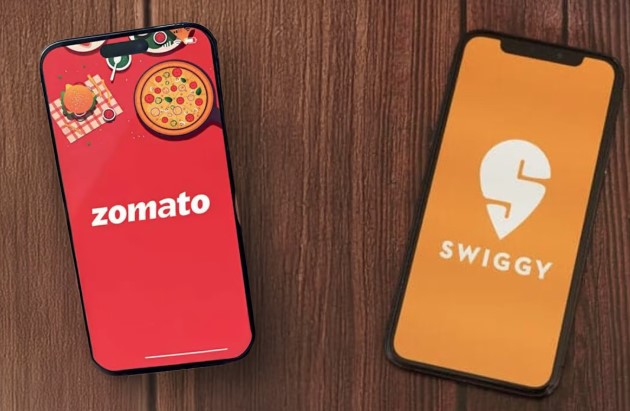Swiggy, one of India’s leading food delivery platforms, has been experiencing steady growth, following a path similar to its competitor, Zomato. Despite the ongoing competition, Swiggy’s strong performance in the food and quick commerce segments demonstrates its resilience in a highly competitive market. The company has reported impressive growth in various areas, though it is still working towards achieving profitability.
Inside the Swiggy Ecosystem
Swiggy’s financial results for the second quarter of FY25 (Q2 FY25) show a significant boost in revenue. The company’s gross revenue grew by 26.5% compared to the previous year, reaching ₹3,873 crore. This surge was largely driven by a 30% increase in the gross order value (GOV). GOV is a key metric for food delivery platforms as it reflects the total value of all orders placed on the platform.
Additionally, Swiggy has seen a rise in its monthly transacting users (MTUs). In Q2 FY25, Swiggy recorded 1.71 crore MTUs, which represents a 6.8% increase from the previous quarter and an 18.8% increase compared to the same period last year. This growth in users is a sign that more people are using the platform regularly, which is crucial for Swiggy as it seeks to expand its customer base.
Even with these encouraging outcomes, Swiggy has not yet made a profit. The company reported a loss of ₹625.5 crore, though this was 5% lower than the losses from the previous year. Swiggy’s consolidated EBITDA loss (earnings before interest, tax, depreciation, and amortization) also decreased by 30.2% YoY, amounting to ₹341 crore. While Swiggy has reduced its losses, it still has a long way to go before achieving profitability.
Strong Performance in Food Delivery and Quick Commerce
In Q2 of FY25, Swiggy’s meal delivery business experienced robust growth. The adjusted revenue from this segment grew by 17.8% year-on-year (YoY) and 4.5% quarter-on-quarter (QoQ), reaching ₹1,808 crore. This growth was driven by an increase in GOV, which grew 14.6% YoY and 5.6% QoQ, reaching ₹7,191 crore. This shows that Swiggy’s food delivery service is gaining traction with more people ordering through the platform.
The company also made significant improvements in its adjusted EBITDA for the food delivery segment. The adjusted EBITDA doubled to ₹112 crore, showing a remarkable 94.1% increase from the previous quarter. The EBITDA margin increased from 0.8% in the previous quarter to 1.6%. The contribution margin, which indicates the portion of GOV that contributes to the company’s earnings, increased slightly by 0.2% to 6.6%.
In addition to food delivery, Swiggy’s quick commerce (QC) segment, which includes the delivery of non-food items like groceries and household goods, also showed remarkable growth. In Q2 FY25, the adjusted revenue from quick commerce increased by 137.5% YoY and 27% QoQ, reaching ₹513 crore. The GOV in this segment grew by a massive 75% YoY and 24.1% QoQ, totaling ₹3,382 crore.
Swiggy’s quick commerce (QC) platform has seen significant growth, with monthly transacting users (MTUs) rising by 19% QoQ and 51% YoY to 6.2 million in Q2. The number of orders placed also grew from 5.6 crore to 6.8 crore, reflecting strong user engagement. Additionally, Swiggy expanded its network of dark stores to 609, up by 52 from the previous quarter, to enhance delivery speed and meet the growing demand for quick commerce services.
Swiggy Versus Zomato: A Comparison of Performance
While Swiggy is seeing growth, its main competitor, Zomato, continues to lead in profitability. Zomato reported a profit of ₹176 crore for Q2 FY25, a notable achievement compared to Swiggy’s losses. Blinkit, Zomato’s fast commerce platform, is also expanding quickly. For the second quarter of FY25, Blinkit’s average order value (AOV) was ₹660, which was far higher than Swiggy’s Instamart platform’s AOV of ₹499. Blinkit also has more MTUs, with 8.9 million users, compared to Instamart’s 6.2 million users.
Zomato’s accomplishment in the meal delivery market is particularly noteworthy. While Zomato’s adjusted EBITDA was ₹341 crore, Swiggy’s was ₹112 crore. Zomato’s margin in this segment was 3.5%, more than double Swiggy’s margin of 1.6%. This shows that while Swiggy is growing in both food delivery and quick commerce, Zomato remains a strong competitor in terms of profitability and financial stability.
Diversification Strategy: Swiggy’s Ventures Beyond Food Delivery
Swiggy has been making moves to diversify its revenue streams and strengthen its brand presence. One of the company’s more unconventional strategies includes its investment in sports and entertainment. Recently, Swiggy purchased the World Pickleball League team Team Mumbai. While this may seem like a surprise, it could help Swiggy reach new audiences and expand into areas such as team management and broadcasting rights.
Furthermore, Swiggy is spending ₹1,600 crore on Scootsy, a high-end delivery service that it purchased in 2018. Scootsy specializes in delivering high-end items like cakes, baked goods, gifts, and lifestyle products. Swiggy plans to use this investment to open around 538 new dark stores, further boosting its logistics and supply chain capabilities. These initiatives are part of Swiggy’s strategy to move beyond food delivery and tap into new markets, including premium delivery services and sports.
Swiggy’s efforts to diversify demonstrate its ambition to grow its business and create new revenue streams, though it remains focused on maintaining a strong presence in the food delivery and quick commerce sectors.
Swiggy’s performance in the food delivery and quick commerce markets has been strong, with significant revenue growth and increasing user engagement. However, it is still working towards profitability, and its competition with Zomato, especially in terms of profitability, remains a challenge. Swiggy’s diversification strategy could offer additional revenue streams, but the company still has a long way to go before securing a solid position in the market.
